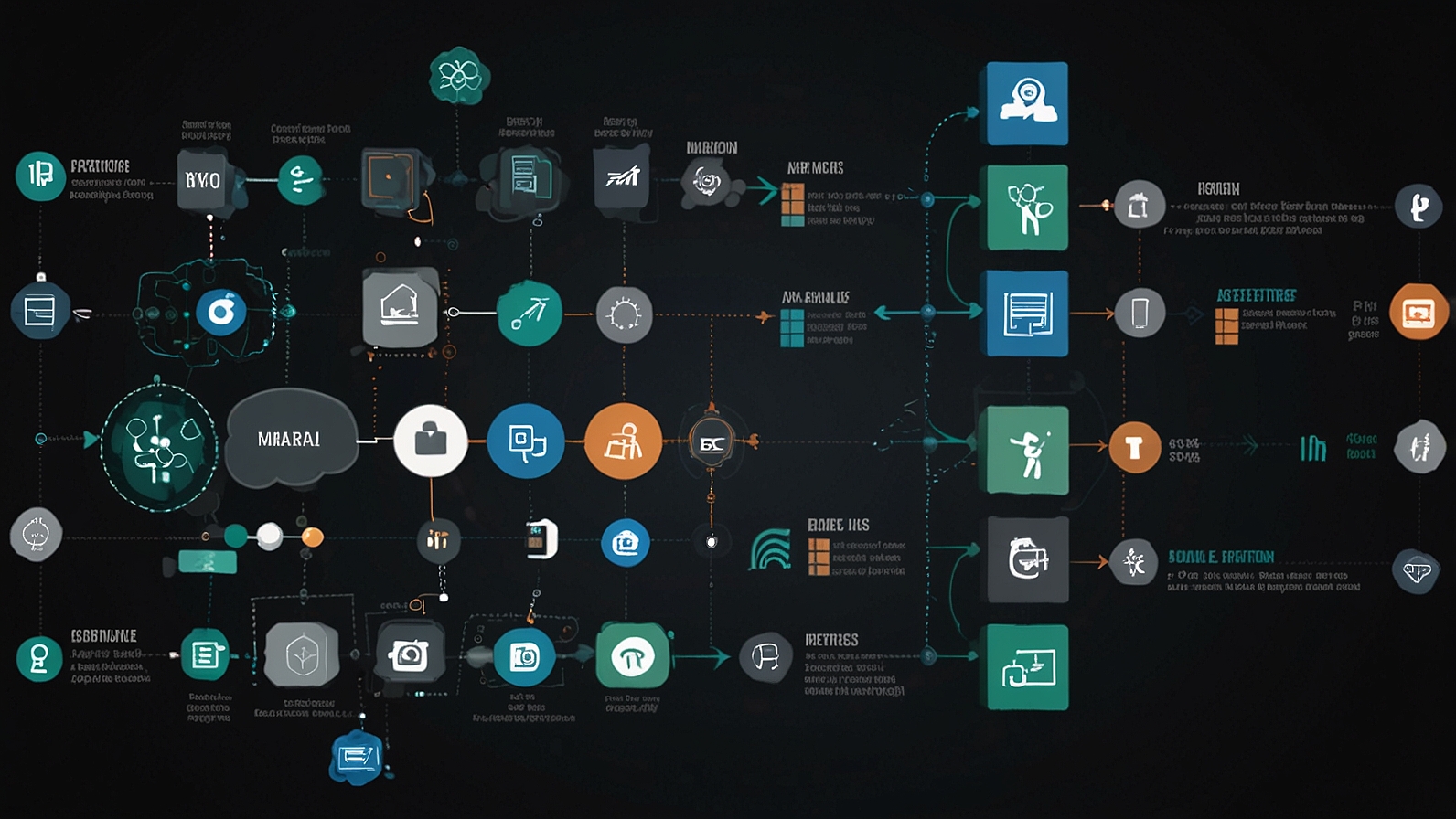Have you ever spent what feels like hours scrubbing through a video timeline, desperately trying to find that one clip of an expert making a specific point? Or have you tried to find a video online using only a vague description, only to get completely irrelevant results?
You’re not alone. For decades, video has been a “dumb” medium. We could watch it, but we couldn’t truly search it or understand its content the way we can with text. That is, until now.
The convergence of video and artificial intelligence, a field we’ll call Video&AI, is fundamentally changing our relationship with moving images. It’s not just a buzzword; it’s a research-backed revolution that’s making video as searchable, indexable, and accessible as a block of text. This guide will pull back the curtain, showing you exactly how Video&AI works, the powerful science behind it, and the high-value ways it’s being used today.
At its core, Video&AI is the application of artificial intelligence—specifically, a branch called computer vision and deep learning—to automatically understand, analyze, and extract meaning from video content.
Think of it like this: if a human watches a video, their brain automatically performs a series of complex tasks. They identify objects (a car, a dog), recognize scenes (a busy street, a quiet beach), understand actions (running, waving), and even interpret emotions (joy, surprise). Video&AI trains computers to do this at a massive scale and speed.
Early AI could maybe identify a cat in a single image. Modern Video&AI systems are far more sophisticated because they understand the context that comes from a sequence of frames. They can track the cat as it jumps onto a sofa, recognize that the action is “jumping,” and even infer that the person laughing off-camera is “amused.”
While the algorithms are complex, the general process can be broken down into three key stages:
- Ingestion & Pre-processing: The video is broken down into its component parts—individual frames (like a slideshow of images) and the audio track.
- Feature Extraction: This is where the AI magic happens. Different neural networks analyze these components to extract “features.”
- Visual Analysis: Identifies objects, people, scenes, text on screen (OCR), and facial expressions.
- Temporal Analysis: Understands motion and actions across multiple frames (e.g., “walking,” “opening a door”).
- Audio Analysis: Transcribes speech, identifies speakers, and detects sound events (e.g., “glass breaking,” “applause”).
- Semantic Understanding & Indexing: All these extracted features are woven together to create a rich, searchable “understanding” of the video. The AI doesn’t just see pixels; it understands that “Person A is giving a presentation about market trends in a conference room.”
This isn’t science fiction or marketing fluff. The progress in Video&AI is being driven by rigorous, peer-reviewed academic work. Major conferences like CVPR (Computer Vision and Pattern Recognition) and ICCV (International Conference on Computer Vision) feature hundreds of papers each year dedicated solely to video understanding.
A common misconception is that AI just “sees” like we do. In reality, it learns from massive, meticulously labeled datasets. Projects like Kinetics (from DeepMind) and AVA (Atomic Visual Actions) from Google provide millions of video clips where every action, object, and person is annotated. This is the training ground for the AI models, allowing them to learn the patterns that define our visual world.
The cutting-edge research focuses on challenges like:
- Efficiency: Processing hours of video in minutes, not days.
- Few-Shot Learning: Teaching an AI to recognize a new concept with very few examples.
- Causality & Reasoning: Moving beyond what is happening to why it might be happening.
This research is rapidly translating into practical tools that solve real business and accessibility problems. Let’s look at some of the most impactful applications.
Imagine searching a corporate video library with the query: “Find me clips where the CEO is discussing sustainability goals while a chart is shown on screen.” With traditional metadata (like the video title), this is impossible. With Video&AI, it’s a simple query.
- Real-World Example: YouTube uses advanced Video&AI to not only power its search but also to automatically generate chapter timestamps by detecting topic changes within a video.
Media companies and archives (like Getty Images or the BBC) hold millions of hours of footage. Manually logging this content is a monumental task. Video&AI can automatically generate a detailed, searchable index for every video, turning a “black box” archive into a dynamic digital asset.
- The table below shows the stark difference between manual and AI-powered indexing:
| Feature | Manual Indexing | Video&AI Powered Indexing |
|---|---|---|
| Speed | Hours per video | Minutes per video |
| Detail | Limited to broad descriptions | Granular (objects, actions, scenes, spoken words) |
| Consistency | Varies by human logge | Objectively consistent |
| Cost | High (labor-intensive) | Lower (automated) |
| Scalability | Difficult and slow | Highly scalable |
This is one of the most profound applications. Video&AI can automatically generate:
- Audio Descriptions: For the visually impaired, the AI can narrate key visual events happening on screen between dialogue.
- Real-Time Captioning: Beyond simple speech-to-text, it can identify who is speaking and caption live events with high accuracy.
- Sign Language Recognition: Emerging research is enabling AI to interpret sign language from video, breaking down communication barriers.
As with any transformative technology, there are misunderstandings. Let’s clear a few up.
- Myth 1: “Video&AI is 100% accurate and will replace all human effort.”
- Reality: AI is a powerful tool, not a perfect replacement. It can achieve superhuman accuracy in specific tasks (like identifying a car) but still struggles with nuanced context or sarcasm. The best systems use AI for the heavy lifting, with humans providing quality control and handling edge cases.
- Myth 2: “It’s only for big tech companies.”
- Reality: Cloud-based AI services from Google Cloud Video AI, Microsoft Azure Video Indexer, and Amazon Rekognition Video have democratized this technology. Now, even startups and individual developers can tap into powerful Video&AI capabilities through simple APIs, paying only for what they use.
- Myth 3: “It’s just for surveillance.”
- Reality: While security is one application, focusing solely on it ignores the vast positive potential in media, entertainment, education, and accessibility, as we’ve outlined above.
Ready to explore how this technology can work for you? Here are 5 practical tips to get started:
- Audit Your Video Library: Identify your most valuable, yet underutilized, video assets. These are the best candidates for an AI-powered indexing pilot project.
- Define a Specific Goal: Don’t just “use AI.” Start with a clear problem: “I want to make our training videos searchable by the concepts taught,” or “I need to generate accurate subtitles for our webinars.”
- Explore Cloud APIs: Take a single video and run it through a free tier of a service like Google’s Video AI or Microsoft’s Video Indexer. The results will be an eye-opening demonstration of what’s possible.
- Prioritize Accessibility: Consider how auto-captioning and audio description could make your video content inclusive to a wider audience, while also improving SEO.
- Stay Curious: The field is evolving fast. Follow research from institutions like MIT CSAIL and Stanford AI Lab to see what’s coming next.
The fusion of video and AI is unlocking a new layer of intelligence in our digital world. It’s moving us from simply watching video to truly interacting with it.
What’s the first application of Video&AI that comes to your mind for your own work or hobbies? Let us know in the comments!
You May Also Read: When AI Is Recognized: Why CudekAI’s Detector Matters in a Digital World
How does Video&AI differ from image recognition?
Image recognition analyzes a single, static photo. Video&AI adds the crucial dimension of time, allowing it to understand motion, actions, and the narrative flow that unfolds across thousands of frames.
Is my data private when using cloud-based Video&AI services?
Reputable cloud providers offer robust data protection and privacy agreements. For highly sensitive data, some companies are also developing on-premises Video&AI solutions that keep all processing in-house.
What kind of computing power is needed for Video&AI?
Processing video is computationally intensive. For most, using cloud services is the most feasible option, as they provide the necessary GPUs and infrastructure on demand. You only need an internet connection.
Can Video&AI understand any video, or does it need to be trained?
Most off-the-shelf Video&AI services are pre-trained on massive datasets and can understand a wide array of common objects, scenes, and actions out-of-the-box. For very specialized domains (e.g., identifying specific machine parts or rare animal behaviors), custom training (“fine-tuning”) is often required.
How accurate is the automated transcription from Video&AI?
Accuracy for clear, single-speaker audio can be as high as 95%+ for major languages. Accuracy can decrease with heavy accents, background noise, or multiple people talking over each other. However, the technology is constantly improving.
Can Video&AI be used for creative editing?
Absolutely! It can automatically highlight key moments in a long speech, create “best-of” reels from sports games by identifying scoring plays, or even sort footage by shot type (e.g., find all the close-ups).
What are the ethical considerations?
Like any powerful tool, Video&AI must be used responsibly. Key concerns include potential for bias in the algorithms, user privacy, and obtaining proper consent for analyzing video where people are identifiable. Transparency about its use is crucial.

